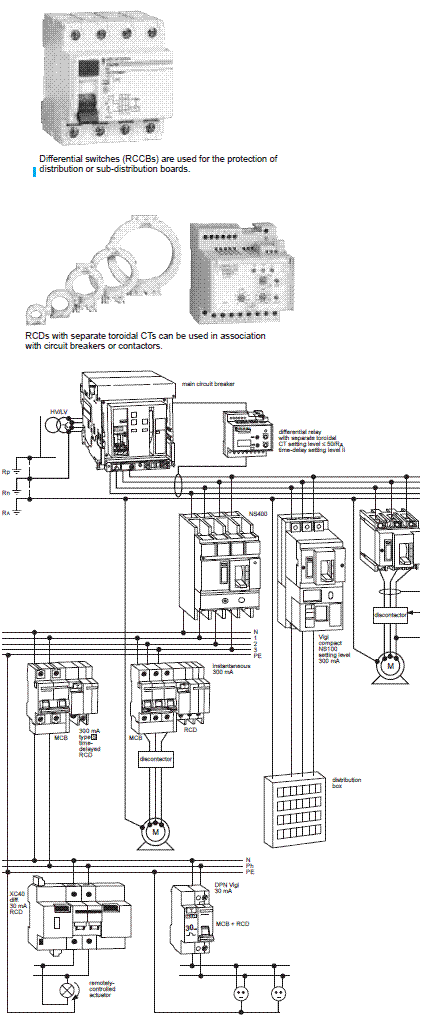These devices operate on the principle of differential current measurement, in which any difference between the current entering a circuit and that leaving it, must (on a system supplied from an earthed source) be flowing to earth, either through faulty insulation or through contact of an earthed object, such as a person, with a live conductor. Essential operation of 2 pole and 4 pole RCD is similar, the essential features are shown diagrammatically in figure below .

A magnetic core encompasses all the current carrying conductors of an electric circuit and the magnetic flux generated in the core will depend at every instant on the arithmetical sum of the currents; the currents passing in one direction being considered as positive, while those passing in the opposite direction will be negative. In a normally healthy circuit i1 + i2 = 0 (i1+i2+i3+In=0 in 4 pole system) and there will be no flux in the magnetic core, and zero e.m.f. in its coil. An earth-fault current id will pass through the core to the fault, but will return to the source via the earth, or via protective conductors in a TN-earthed system. The current balance in the conductors passing through the magnetic core therefore no longer exists, and the difference gives rise to a magnetic flux in the core. The difference current is known as the “residual” current and the principle is referred to as the “differential current” principle. The resultant alternating flux in the core induces an e.m.f. in its coil, so that a current i3 flows in the tripping-device operating coil. If the residual current exceeds the value required to operate the tripping device, then the associated circuit breaker will trip. Standard residual-current devices, referred to as RCDs, sufficiently sensitive for direct contact protection are rated at 30 mA of differential current. Other standard IEC ratings for high-sensitivity RCDs are 10 mA and 6 mA (generally used for individual appliance protection). This additional protection is imposed in certain countries for circuits supplying socket outlets of ratings up to 32 A, and even higher if the location is wet and/or temporary (such as work-sites for example). RCDs are commonly incorporated in the following components: – industrial-type moulded-case differential circuit breakers conforming to IEC 947-2 and its appendix B, – domestic-type differential circuit breakers (RCCBs)* conforming to IEC 755, 1008, and 1009 (RCBOs), – differential switches conforming to particular national standards, – relays with separate toroidal (ring-type) current transformers, conforming to IEC 755.



